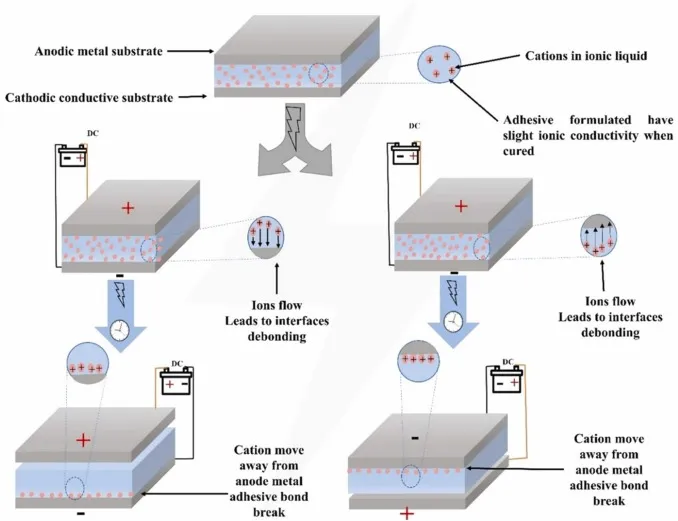In the modern age, changing the battery in an iPhone won’t be a risk-prone, advanced, and far-from-messy affair with glue. According to The Knowledge, Apple is exploring a untouched era that would make it much easier for people to remove the battery units from their iPhones, making replacement and maintenance more convenient.
Here’s the proper ingredient from the pony’s mouth: “The new technology – known as electrically induced adhesive debonding – involves wrapping the battery in metal rather than foil as it is currently. The guys said this would allow people to remove the battery from the chassis by giving it a small electric shock.
Apple is making this trade as it undergoes an overhaul regarding the glue defect that has plagued repair professionals and DIY fans for years. Even the parents of iFixit had to write an entire article titled “Why Electronics Rely on Glue – and Why They Shouldn’t” to make the situation even more glaring.
“On 2020 iPhone models, that process can take up to two hours, including an hour of cleaning corrosion damage with fluids, and then another hour of application to replace the adhesive. This is not an easy solution,” the item noted.
Why is Apple doing this

Why is this decline happening now? This is due to the European Union and its drive towards sustainability and a clean era. Currently, the EU Commission has notified battery legislation, which, among other things, seeks to take care of the situation with additional responsibility and in no way disturb the digital abuse blame. Refer to the fundamentals:
- Targets for recycling capacity, subject material treatment and recycled content content will be introduced regularly from 2025. All collected misused batteries must be recycled and meet the highest treatment limits.
- After opening in 2027, customers will be able to remove and replace the portable batteries of their digital products at any time in the life cycle.
- Transportable batteries incorporated in home appliances shall be easily removable and replaceable by the end-user or remote operators during the entire lifetime of the application, if the batteries have a shorter lifetime than the application, or fresh at end-of-life. To apply.
Christina Ganpini, coordinator of the Right to Restore (Europe) then said, “In a major breakthrough for the right to repair, all new portable devices and lightweight means of transport coming onto the market will now have to be designed with replaceable batteries ” the upcoming. You can read the full proposal here (PDF).
somewhat of ionic magic
So, how did Apple turn to the puzzle called “electrically induced adhesive debonding” painting? Adhesives capable of establishing strong bonds hours after taking into account fast and convenient power-fuelled judicial separation are in top demand. A research paper published in the journal Fabrics Communications today says such technology is especially important in urgent situations or for elements requiring extensive disintegration.

The electrical and electronics sectors are in urgent need of electrically detachable adhesives to enable installation and maintenance of delicate digital parts. The use of conductive adhesives that respond to electrical energy to connect elements on circuit platforms will greatly simplify the process of removing and replacing misplaced components.
An additional advantage of those adhesives is that they can be activated remotely, eliminating the need for direct physical touch with the parts being joined. Currently, old glue found in smartphones depends on peak temperatures to melt and remove. The method described above performs the same process, although uses electrical stimulation instead of heat.
Transfer to electrical energy offers a promising solution that avoids many challenging situations. This mode relies on the inclusion of ionic elements such as dissolved salts or ionic liquids in the adhesive composition. Those components add ion-based conductivity to the glue, and because of this, it becomes sensitive to electrical stimulation.

Voltage-activated debonding can reduce the possibility of mechanical, thermal, or chemical injury to the telephone’s internal elements. Alternatively, the entire method mandates the use of conductive substrates such as metal or fabric that can be lined with a conductive layer.
Once there, the debonding process can also be initiated by applying voltage around the two bonded surfaces. They have been attracting a large amount of interest in the aerospace and electronics sectors recently due to their potential applications and advantages over conventional bonding forms such as electrically reactive adhesives. iPhones may eventually become the biggest adopters of this promising era in the near future.
You will be able to learn more about the electrical adhesion and debonding process at the microscopic level on this research paper, which was published here in the journal Complicated Fabrics Interfaces, and this incredible thesis was presented to the College of Science based in Sweden. Chemical Sciences and Engineering Kungliga Techniska Hogskolan. You can learn more about the whole process in terms of recycling on the Royal Nation of Chemistry.
Discover more from news2source
Subscribe to get the latest posts sent to your email.




